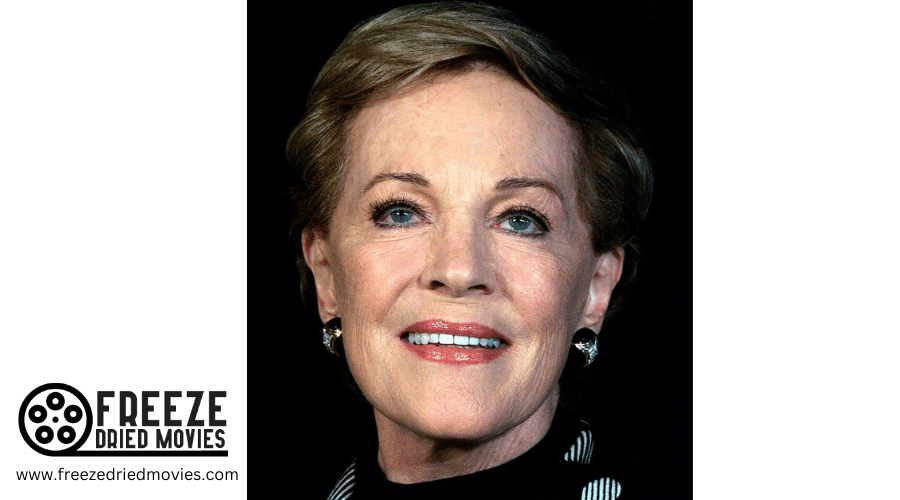Julie Andrews: From Broadway Darling to Film Superstar

Julie Andrews transformed from a Broadway darling into Hollywood royalty through her extraordinary talent and versatility. After dazzling audiences in "My Fair Lady" on Broadway, she captured hearts as Mary Poppins, winning an Academy Award for her film debut. Her four-octave vocal range and magnetic screen presence led to iconic roles like Maria in "The Sound of Music." Her path from stage to screen redefined musical entertainment for generations.
Image: Eva Rinaldi creator QS:P170,Q37885816, Julie Andrews Park Hyatt, Sydney, Australia 2013, CC BY-SA 2.0
Early Life and Discovery of Her Four-Octave Range
How did a young girl from Surrey, England, become one of the most exceptional voices of her generation? Born in Walton-on-Thames in 1935, Julie Elizabeth Wells's passage began with a complicated childhood. You'll find that her early years included living with her father briefly before moving in with her mother and stepfather - a change that would ultimately shape her destiny.
Her stepfather's decision to sponsor her vocal training at the Cone-Ripman School proved critical. Under the guidance of renowned instructor Madame Lilian Stiles-Allen, Julie's natural talent flourished. She possessed what experts described as a "very pure, white, thin voice" with an extraordinary four-octave range.
It wasn't until 1950 that she learned about her true parentage from her mother, a secret she kept private until revealing it in her 2008 autobiography. Like Hollywood's Golden Age stars before her, she would go on to captivate audiences with both her charm and extraordinary talent.
The Rise to Broadway Stardom (1954-1962)
A stunning metamorphosis awaited Julie Andrews when she crossed the Atlantic to make her Broadway debut in 1954. As Polly Browne in "The Boy Friend," she'd take her first steps toward becoming a theatrical sensation.
You'd find Andrews' career quickly soaring when she landed the coveted role of Eliza Doolittle in "My Fair Lady" just two years later.
Her exceptional talents weren't confined to Broadway alone. While commanding the stage, Andrews branched into television, earning an Emmy nomination for her captivating performance in "Cinderella" in 1957.
Interestingly, Andrews would later share the role of Eliza Doolittle with Audrey Hepburn's elegance, as Hepburn took on the film version of My Fair Lady while Andrews conquered Mary Poppins.
Breaking Into Hollywood With Mary Poppins

The enchanting world of Hollywood beckoned Julie Andrews in 1964 when Walt Disney cast her as the magical nanny in "Mary Poppins." You'd witness her shift from stage to screen become one of cinema's most triumphant debuts, as Andrews captured the Academy Award for Best Actress and helped the film secure 13 Oscar nominations.
Originally considered for the Broadway version, Andrews found her true calling in the motion picture adaptation. Her portrayal of the fanciful nanny showcased her exceptional singing talent and acting versatility, making "Mary Poppins" one of 1964's highest-grossing films.
The success of this beloved Disney musical launched Andrews into Hollywood stardom, opening the door for her next iconic role in "The Sound of Music" just a year later. You'll find it remarkable that her first film role would become such a defining moment in cinema history. Her journey to stardom began decades after In Old California, the first film shot entirely in Hollywood, helped establish the area as a filmmaking destination.
The Golden Age: From Sound of Music to Victor/Victoria
Success catapulted Julie Andrews to even greater heights following her Mary Poppins triumph when she starred in The Sound of Music, a role that would define her legacy. As Maria, the lovable governess who brought music into the lives of the von Trapp family, you'll find Andrews at her most enchanting. The film went on to become one of cinema's greatest achievements, cementing her position as Hollywood's leading musical theater performer.
But Andrews wasn't content to rest on her laurels. By 1982, she'd showcase her versatile range in Victor/Victoria, playing a fascinating dual role as a woman posing as a male performer who impersonates women. This multifaceted performance earned her another Oscar nomination, proving she could excel at both conventional and complex characters with equal brilliance.
Legacy and Impact on Musical Theatre and Film
What makes Andrews' legacy particularly outstanding is how she's bridged the gap between theatrical elegance and mass appeal. She's brought a new level of sophistication to musical numbers while maintaining an accessible charm that resonates with audiences of all ages.
Her ability to skillfully switch between Broadway and Hollywood has set a standard for versatility in performing arts. Even now, decades after her breakthrough roles, you'll see her impact in how contemporary artists approach musical storytelling.




